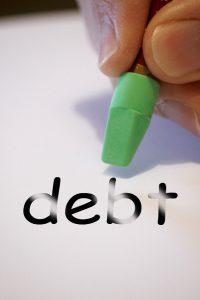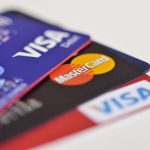Financial discipline is a must for debt riddance. But there are both right and wrong ways to go about getting rid of debt. Unfortunately, those dressed up as a quick fix tend to cause more problems than they solve.
By: Phoenix Lee/
Taking a loan for debt riddance is a huge responsibility, therefore you have to think through it thoroughly. Borrow only when you need to and have carefully considered how it may affect you. You need to consider some factors before taking a loan, this includes your family.
Those with financial discipline may consider taking a cash advance on a credit card – but remember that this is a very expensive proposition.
Table of Contents
There is usually a fee charged for advances along with very high interest rates that begin ticking away from the moment you initiate the advance. Cash advances are very costly, high-risk item. The cost of a cash advance from a credit card can be 500 percent or more.

Financial discipline requires that you don’t dig one hole to fill in another.
Before taking a loan, you have to consider other expenses such as car monthly installment, transport expenses, food, child’s education and other expenses. The best way is to write down all your expenses on a piece of paper and do the necessary calculation. After which, apply for the loan when you are sure that you have the ability to repay the loan.
If you have financial discipline and are willing to put your house at risk, home equity loan could be a fix for debt riddance. There are pluses, such as a lower interest rate and the deductibility of the interest payments. And a home equity loan can be relatively fast compared to a full-blown mortgage loan.
A home equity loan is also called cash-out refinancing, or a second mortgage. A home equity lets you borrow money, while using your house as collateral. Home equity loan is another option available to homeowners who may have a tight cash situation but have have a valuable house at their disposal, which they may sell and downgrade. But a home equity loan lets you get money out of your house, without having to lose it.
There are plenty of advantages: when your house is the collateral, the bank feels a lot more secure; they know you can’t exactly pack up your house and run away with it. Because there’s something they can foreclose on, banks consider home equity loans to be low-risk, secured loans. That means they charge a super-low interest rate, seldom above 1.3 per cent per annum. For reference, that’s less than a third of your CPF Ordinary Account rate (up to 3.5 per cent per annum), and about 1/6th of a personal loan rate (about six per cent per annum).
That super-low interest rate means home equity loans are quite cheap, and can provide a much bigger loan than you’d get through, say, a personal installment loan. Most other, unsecured loans can only lend you up to four times your monthly salary.
On top of this, the government in 2017, made regulatory changes to home equity loan restrictions. If your house is already paid up, you can borrow up to half its value, without having to meet Total Debt Servicing Ratio (TDSR) restrictions.
Sadly though, home equity loan can only be gotten for private a private property, HDB is not allowed.
HDB says, “HDB flats can only be mortgaged to banks or financial institutions to finance the purchase of the flat itself. You are not allowed to use your HDB flat, which has been fully paid for, as collateral to banks to raise credit facilities for private reasons.“
This is how home equity loan works:
Suppose you have purchased a property in 2010 for $650,000.
Loan was 80% = $520,000 amortized over 30 years.
In 2018, a new valuation was done and the property is worth $1 million.
The current loan amount is $440,000.
If this property loan is the only one you have in Singapore, then you may qualify for 80% lending on valuation, which is $800,000.
Equity home loan amount = (80% * valuation) less current loan amount less CPF usage including accrued interest.
Assuming you have used $160,000 CPF with accrued interest, this is the home equity loan amount you would get:
$800,000 – $440,000 – $150,000 = $200,000
Together with the outstanding loan, the total debt on the property now would be $640,000.
Personal loans are a way to use tomorrow’s income today, and unlike other loan products like mortgage loans or education loans, the process involved to apply for best personal loans is relatively simple.
But you must note that the interest rates are much higher than, say, for a car loan. This is because personal loans are unsecured loans, which means that the personal loan is not backed by any asset. The loan amount and interest rate depend on different parameters such as your income, credit history, repayment capacity, and others.
As even the best personal loans come with high interest rates, continuously defaulting loan will put you on a downward spiral. So, the rule of the thumb for financial discipline is, if you think you are going to be defaulting loan, contact your lender to discuss restructuring your best personal loans.
Mr Paul Ho, chief mortgage consultant at iCompareLoan, said: “Most importantly, remember that you need to borrow when you don’t need the money, because when you really need it, no one will probably lend you any.” He added, “the Covid-19 crisis is a very tough time for many businesses and those having to serve loans. Of course the Budget and the Stimulus Package is giving some money for struggling businesses, but we must all be innovative and seize any opportunity to survive.”






